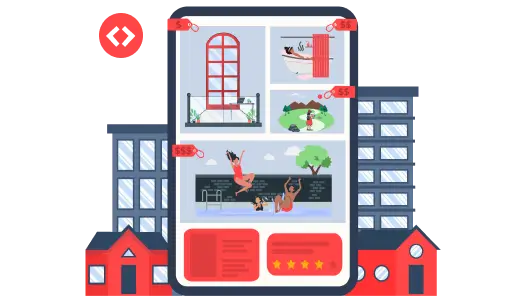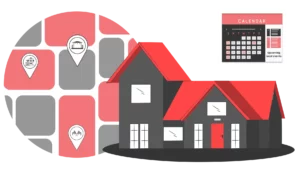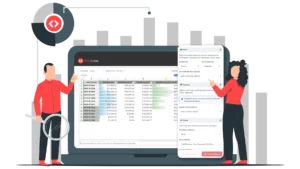Updated: September 24, 2024
As a property manager, dealing with multi-unit setups can be both rewarding and challenging. Multi-unit setup listings refer to properties with multiple units (apartments, rooms, hotels, etc.) that are similar but come with slight variations. The subtle differences significantly impact your pricing strategy and, in turn, your revenue. So, how do you approach pricing in this scenario?
What are Multi-Unit Setups Listings?
Multi-unit setup listings could include identical apartments in a building, hotel rooms of the same category, or even separate cottages on a single property. Though these units may seem alike, the slightest differences—like the floor level or view—can influence guest preferences and booking rates.
For example, if you manage two apartments in the same building, one might face the ocean, and the other might face the street. The ocean-view apartment would naturally attract higher demand while the basic layout and amenities are identical. This calls for a revenue management strategy that reflects these differences.
What are Some Key Features that Impact Pricing for Multi-Unit Setups Listings?
Let’s break down the features that commonly affect pricing in multi-unit setups:
- Unit Size: Larger units generally demand higher prices. But size alone isn’t always a deciding factor; it’s about how guests perceive the added value of the extra space.
- Views: Properties with premium views—like a balcony overlooking the sea or a city skyline—can command a higher price, as guests often consider the view a luxury.
- Amenities: In-unit laundry, upgraded interiors, or a private balcony can increase a unit’s value.
- Floor Level: Higher floors often mean better views or more privacy, which can justify a premium price.
For example, you may manage three units in a high-rise vacation rental. One is on the ground floor with no view, another is on the third floor with a park view, and the last is a corner penthouse with a panoramic sea view. All units have the same size and amenities, but the penthouse could command a 15-20% higher rate due to its view and exclusive location.
How Can You Do Dynamic Pricing for Multi-Unit Setups Listings?
Different units within the same building can command different prices based on slight differences. However, how do you dynamically price these units separately without spending too much time on the revenue management tools?
1. Get Revenue Management Tools
A Dynamic pricing tool like PriceLabs, is invaluable when managing multi-unit setups. We automatically adjust pricing based on market demand, occupancy, and unit-specific features. PriceLabs allows you to differentiate prices by applying offsets for units with premium features like better views or larger sizes.
For instance, you can set Apartment A, which has a sea view, to be 5% more expensive than Apartment B, which faces the street. This helps you fine-tune pricing to reflect the unit’s real value to potential guests. Over time, the software can adjust rates further based on each unit’s performance, ensuring you capture optimal revenue.
2. Set Base Price
The key to multi-unit pricing is establishing a solid base rate. Typically, you’d set a base price for the most standard unit in your lineup—perhaps the smallest, least desirable unit. From there, you adjust the pricing of the other units based on their specific features.
These adjustments can be done with:
- Percentage-based increments: Apply an increase for premium units, for eg. 5% premium for units with better views, larger sizes, or other desirable features.
- Fixed price adjustments: Charge a flat increase (e.g., $20 more per night) for units with specific amenities, like an in-room hot tub or a private balcony.
For instance, if you manage five units in a ski lodge, and one has a hot tub while the others do not, that unit might consistently be priced at $50 more per night to reflect the added luxury.
3. Portfolio Occupancy-Based Adjustments (POBA)
Another advantage of dynamic pricing tools like PriceLabs is Portfolio occupancy-based adjustments (POBA). This strategy allows you to modify pricing based on the total occupancy rate of all the units in the setup.
For example, when the overall occupancy of your multi-unit property is low, you can automatically lower prices to attract more bookings. Conversely, as occupancy increases, so can the prices. This ensures you maximize revenue during high-demand periods while avoiding vacancies during slower times.
4. Tracking Unit Performance
Not every amenity will attract the same level of demand, and it’s important to track how each unit performs. Historical data can give you valuable insights into which units consistently book faster and at higher rates and which ones may need some adjustments. You can see how each listing is performing in multi-unit calendar on PriceLabs.
For example, you might find that while your ocean-view units book quickly at a premium, your street-facing units remain vacant longer. In this case, you may need to lower the prices for the less desirable units or offer special promotions to boost occupancy.
5. Booking Preferences and Trends
It’s also important to keep an eye on booking trends. During peak seasons, guests may be willing to pay more for a unit with specific features, like a private balcony in the summer or a fireplace in the winter. Adjust your rates accordingly to capture these seasonal trends.
For instance, if you manage a beachfront property, units with direct beach access could see higher demand during summer, allowing you to increase rates. Meanwhile, units with cozy indoor features like fireplaces or hot tubs may be more desirable during the colder months, offering an opportunity to adjust winter pricing.
6. Bundle and Package Deals
Consider offering bundle deals for larger groups, such as discounts for booking multiple units together. Long-term stays are another opportunity to offer discounts across units, mainly if your property caters to families or corporate groups.
For example, If a guest books two adjacent units for an extended family vacation, you could offer a 10% discount on the second unit. This can help fill vacancies while providing added convenience to your guests.
Conclusion
Pricing for multi-unit setups with slightly different features requires a flexible and dynamic approach. You can optimize occupancy and revenue by understanding each unit’s unique attributes, setting appropriate base rates, and utilizing tools like PriceLabs to adjust pricing based on demand and features. Remember to track performance and adjust rates to ensure your pricing remains competitive and aligned with guest preferences.
With these strategies in place, managing multi-unit setups listings can become a seamless process that maximizes guest satisfaction and your bottom line.
About PriceLabs
PriceLabs is a revenue management solution for the short-term rental and hospitality industry. It was founded in 2014 and is headquartered in Chicago, IL. Our platform helps individual hosts and hospitality professionals optimize pricing and revenue management, adapting to changing market trends and occupancy levels.
With dynamic pricing, automation rules, and customizations, we manage pricing and minimum-stay restrictions for any portfolio size, with prices automatically uploaded to preferred channels such as Airbnb, Vrbo, and 110+ property management and channel integrations.
Every day, we price over 400,000+ listings globally across 150+ countries, offering world-class tools like the Base Price Help and Minimum Stay Recommendation Engine. Choose PriceLabs to increase revenue and streamline pricing and revenue management. Sign up for a free trial at pricelabs.co today.








